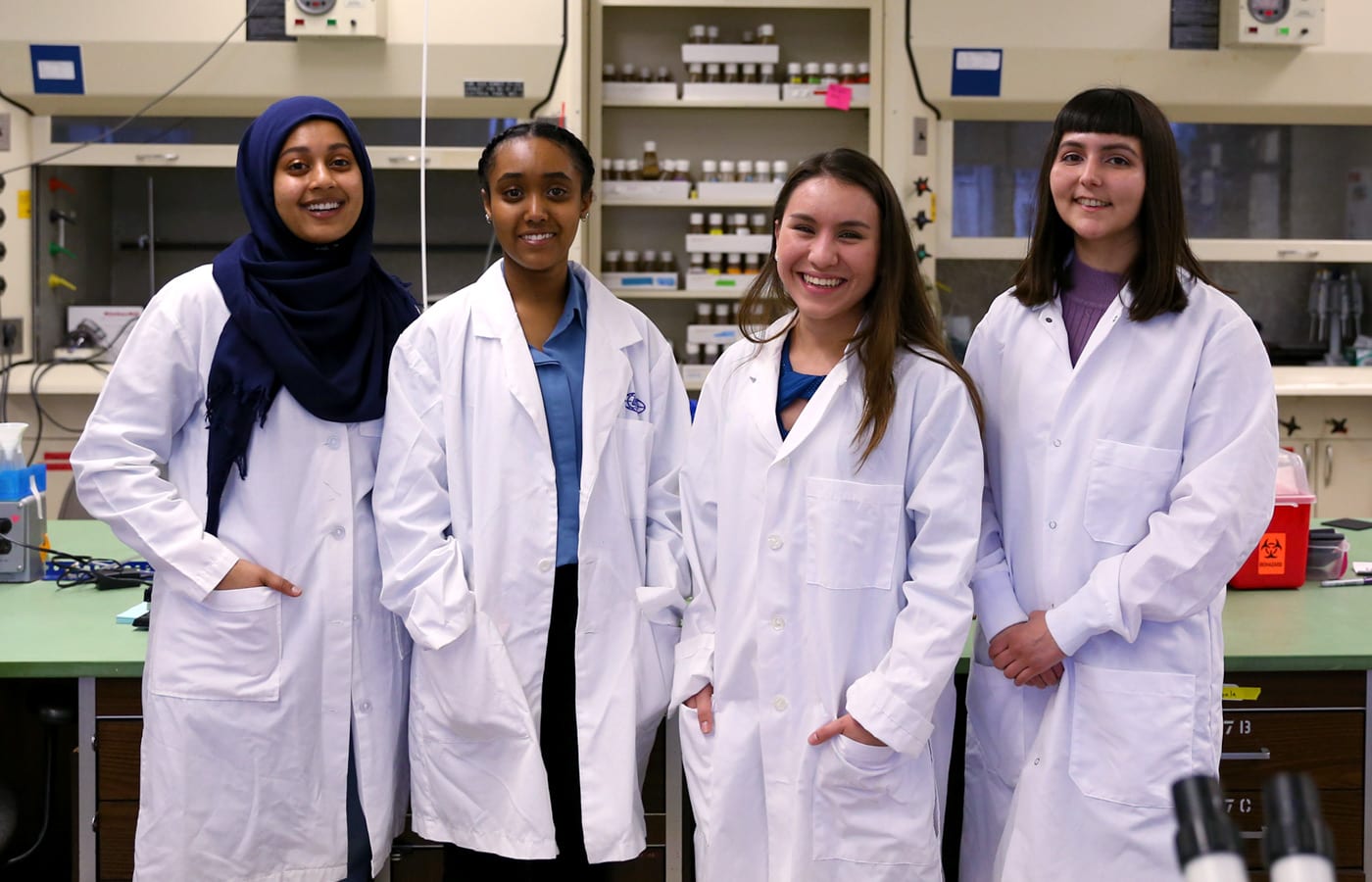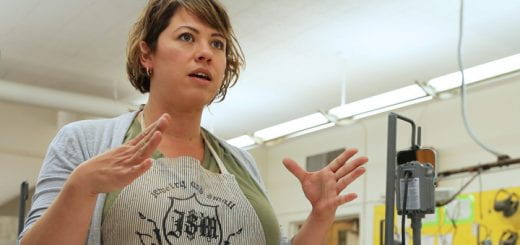Making a MARC

Graduating MARC students (l-r): Nebat Ali, ’19 Microbiology, Mulatwa Haile, ’19 Biological Sciences, Brianna Urbina, ’19 Biological Sciences, and Natanya Villegas, ’19 Microbiology. Photo: Roman Goshev. Ali worked in Biological Sciences Professor Miri VanHoven’s genetics lab before getting accepted into UCSF’s PhD in biomedical sciences program. Haile worked in Biological Sciences Professor Katherine Wilkinson’s neurophysiology lab and will be starting a PhD in neurophysiology at UC Irvine. Urbina worked in Biological Sciences Assistant Professor Rachael French’s genetics lab and will be pursuing a PhD in biochemistry, molecular, cellular and developmental biology at UC Davis. Villegas will be starting a PhD in molecular biology at the University of Oregon after completing her work in Biological Sciences Associate Professor Katherine Wilkinson’s neurophysiology lab. Photo: Roman Goshev.
Between maintaining a strong GPA, studying for entrance exams, developing a strong resume and paying application fees, the path to graduate school can be a steep learning curve. For 30 years, the Maximizing Access to Research Careers (MARC) Undergraduate Student Training in Academic Research (U*STAR) program, sponsored by the National Institute of General Medical Sciences, has provided financial support and mentorship for undergraduates who are underrepresented in the biomedical sciences to do research and prepare them for doctoral training. Directed by Microbiology Professor Cleber Ouverney, the MARC program offers two years of support in the form of educational grants, research and conference opportunities, and workshops designed to prepare students for graduate school. The MARC program works in synergy with other programs on campus such as Research Training Initiative for Student Enhancement (RISE), also funded by NIGMS and administered by Dr. Karen Singmaster in the Chemistry Department. For instance, a number of students may start their research experience in RISE before they move to MARC.
“The National Institute of Health is trying to diversify the scientists that are making decisions in science,” says Ouverney, a native of Brazil who pursued his graduate education in the U.S. “They are trying to fund students who are not normally seen in the sciences. About 75 to 80 percent of MARC students enter competitive PhD programs.”
One such alumnus is Alejandro Lopez, ’16 Psychology, who worked in Biological Sciences Professor Katherine Wilkinson’s lab before beginning his PhD program in neuroscience at Emory University. He says that his MARC experience prepared him well to apply for graduate school and instilled in him the desire to inspire others to study science.
“I want to make sure I stay involved in any type of program that encourages support for minority or underrepresented students like myself in the future, because I know that I was given so many opportunities being in the MARC program,” says Lopez. “I’ve always been taught to pay it forward. In 10 years I’d like to continue mentoring and teaching students and encouraging them to pursue hopefully a PhD in whatever STEM field they choose.”



